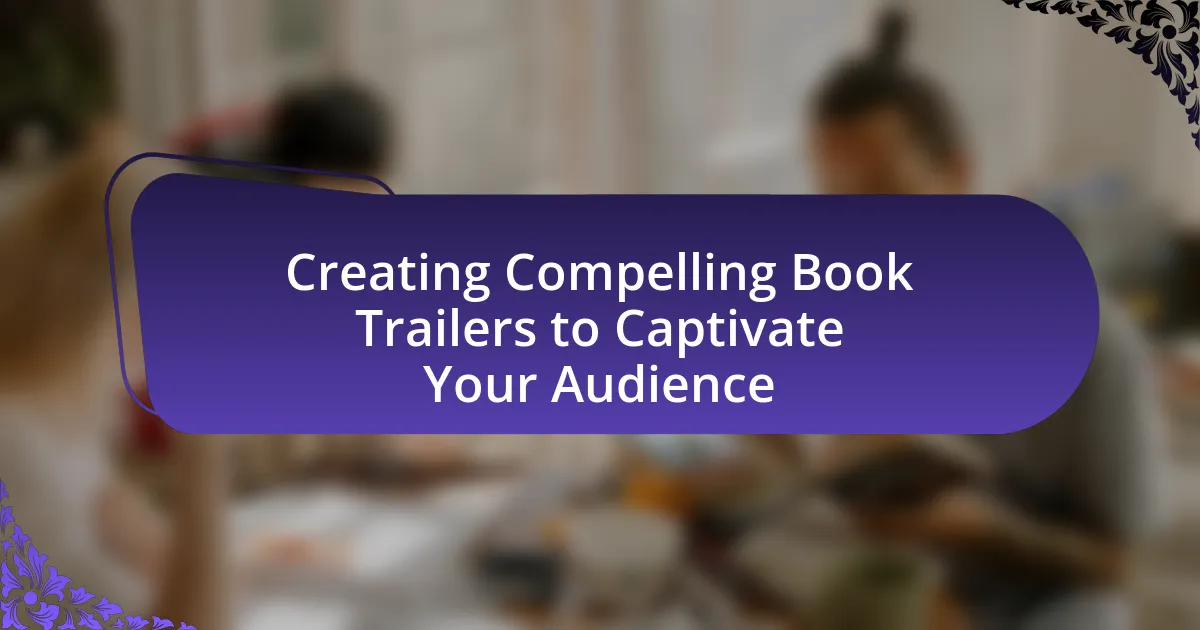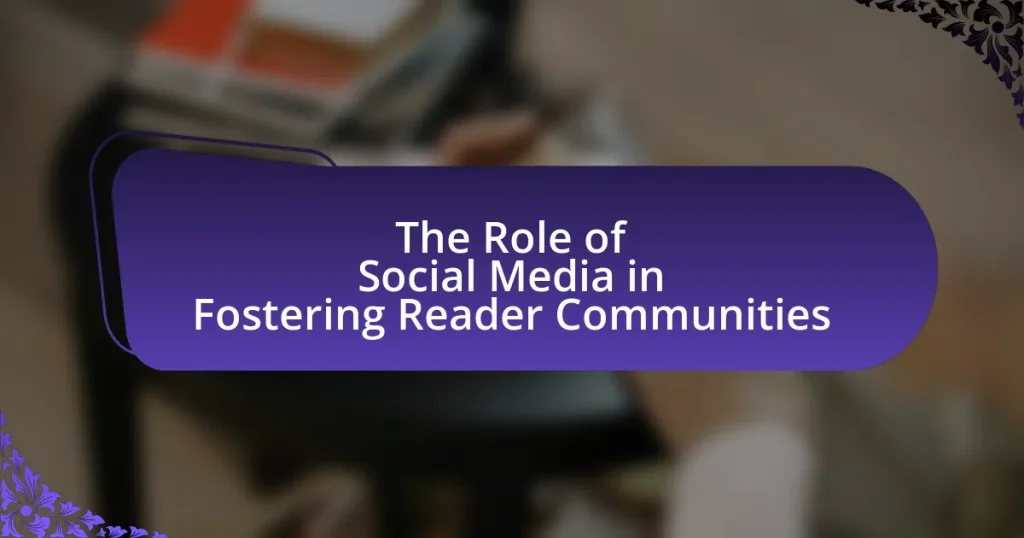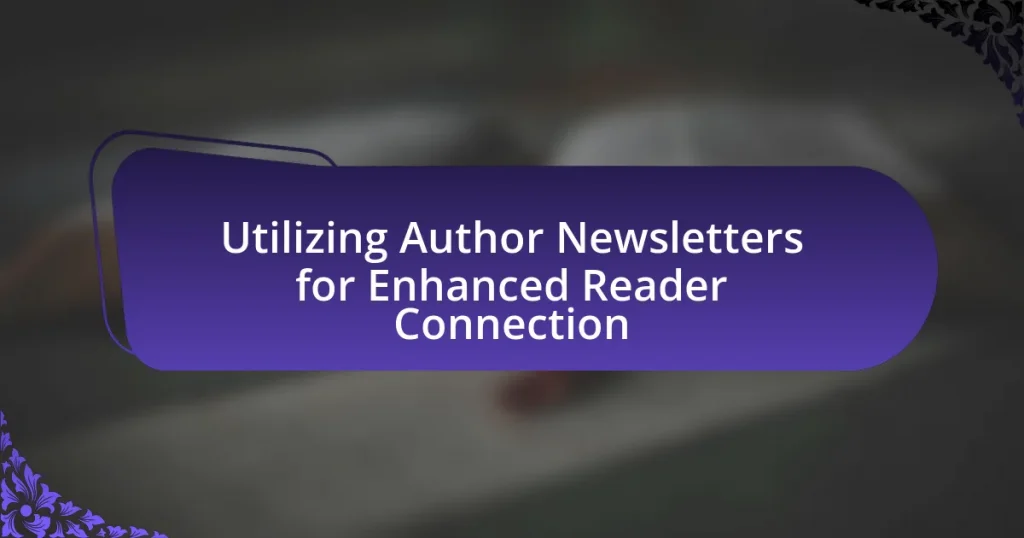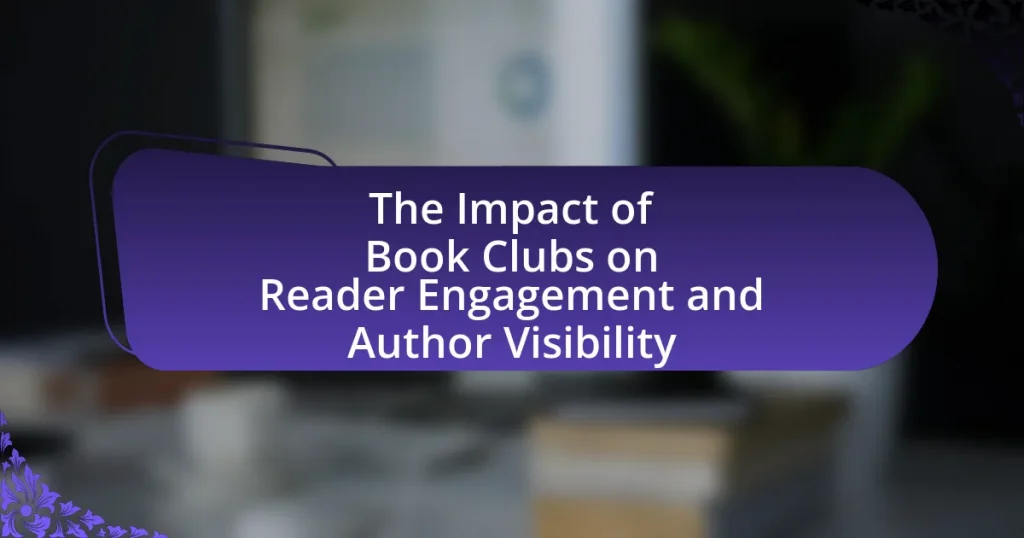Book trailers are short promotional videos that visually and emotionally engage potential readers, showcasing a book’s content and themes. This article explores the significance of book trailers in the publishing industry, highlighting their effectiveness compared to traditional marketing methods. Key components of a compelling book trailer, including narrative hooks, pacing, and visual and audio elements, are discussed, along with best practices for authors to create and promote their trailers. Additionally, the article examines metrics for measuring trailer effectiveness and common pitfalls to avoid, providing a comprehensive guide for authors looking to enhance their book’s visibility and audience engagement through this innovative marketing tool.
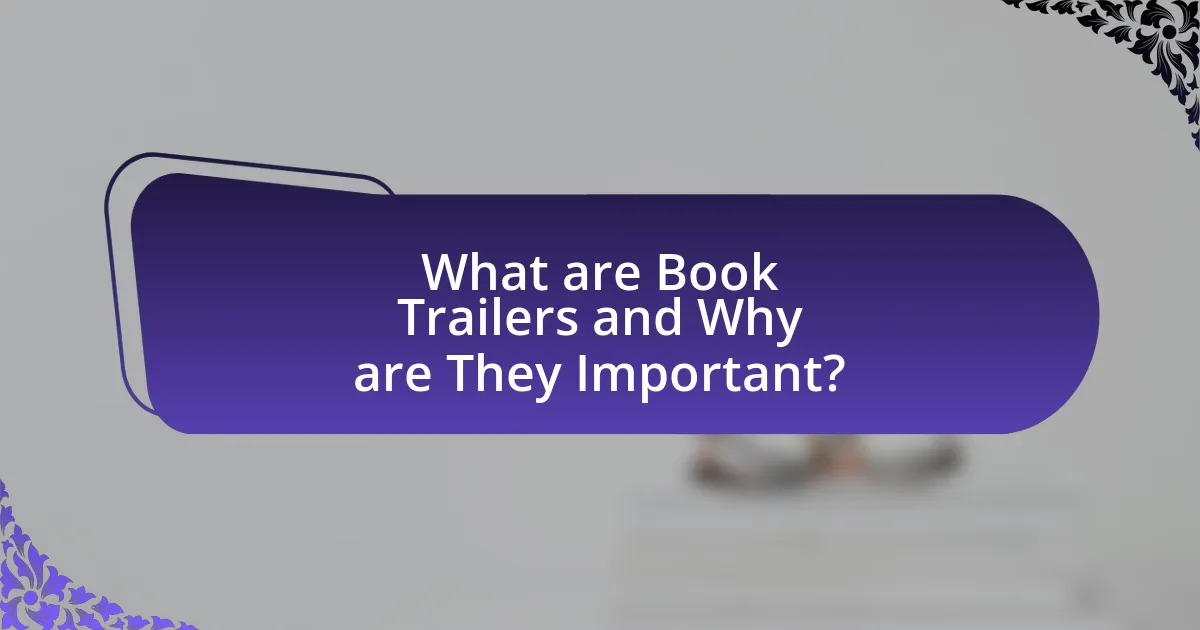
What are Book Trailers and Why are They Important?
Book trailers are short promotional videos designed to showcase a book’s content, themes, and appeal, similar to movie trailers. They are important because they engage potential readers visually and emotionally, increasing interest and awareness about the book. Research indicates that visual content can enhance retention and engagement; for instance, studies show that people remember 80% of what they see and do, compared to only 20% of what they read. This makes book trailers a powerful marketing tool in the competitive publishing landscape, helping authors and publishers reach wider audiences effectively.
How do Book Trailers differ from Traditional Trailers?
Book trailers differ from traditional trailers primarily in their content focus and target audience. While traditional trailers promote films and often include high-budget production elements, book trailers are designed to market literary works and typically feature simpler visuals, voiceovers, and text that highlight the book’s themes, characters, or plot. Additionally, book trailers often aim to engage readers directly, fostering a personal connection to the story, whereas traditional trailers focus on generating excitement for a film’s release. This distinction is evident in the production costs, with book trailers generally being less expensive to create, reflecting the different marketing strategies employed in the publishing industry compared to Hollywood.
What elements make a Book Trailer unique?
A book trailer is unique due to its combination of visual storytelling, sound design, and thematic elements that reflect the book’s essence. The visual storytelling engages viewers through compelling imagery and cinematography that captures the book’s mood and setting. Sound design, including music and voiceovers, enhances emotional resonance and draws the audience into the narrative. Additionally, thematic elements, such as key plot points or character introductions, are strategically highlighted to intrigue potential readers. These components work together to create a distinct promotional tool that differentiates a book trailer from other marketing materials, effectively conveying the book’s unique story and appeal.
Why should authors consider creating a Book Trailer?
Authors should consider creating a Book Trailer because it serves as an engaging marketing tool that can significantly enhance visibility and attract potential readers. A well-crafted Book Trailer can convey the essence of the book, evoke emotions, and create intrigue, which traditional marketing methods may not achieve as effectively. Research indicates that visual content, such as videos, can increase engagement by up to 1200% compared to text alone, highlighting the potential impact of a Book Trailer in reaching a wider audience and generating interest in the book.
What impact do Book Trailers have on Audience Engagement?
Book trailers significantly enhance audience engagement by providing a dynamic visual representation of the book’s themes and characters. Research indicates that 80% of consumers remember a video they watched in the past month, which suggests that book trailers can effectively capture attention and stimulate interest. Additionally, a study by the Book Industry Study Group found that books with trailers saw a 20% increase in sales compared to those without, demonstrating a direct correlation between engaging video content and consumer behavior. This evidence underscores the effectiveness of book trailers in fostering a deeper connection with potential readers.
How can Book Trailers enhance reader interest?
Book trailers enhance reader interest by providing a dynamic visual and auditory representation of a book’s themes, characters, and plot. This multimedia approach captures attention more effectively than traditional text-based marketing, as studies show that video content can increase engagement by up to 1200%. By showcasing key elements of the story, book trailers create an emotional connection and stimulate curiosity, prompting potential readers to seek out the book. Additionally, platforms like YouTube and social media facilitate easy sharing, further amplifying reach and interest among diverse audiences.
What metrics can be used to measure the effectiveness of a Book Trailer?
Metrics to measure the effectiveness of a Book Trailer include view count, engagement rate, click-through rate (CTR), conversion rate, and social media shares. View count indicates how many people have watched the trailer, while engagement rate reflects interactions such as likes, comments, and shares, providing insight into viewer interest. Click-through rate measures the percentage of viewers who click on links to purchase or learn more about the book, indicating the trailer’s persuasive power. Conversion rate tracks the number of viewers who make a purchase after watching the trailer, directly linking the trailer’s effectiveness to sales. Social media shares demonstrate the trailer’s reach and resonance with audiences, as higher shares suggest greater appeal. These metrics collectively provide a comprehensive assessment of a Book Trailer’s impact on its target audience.
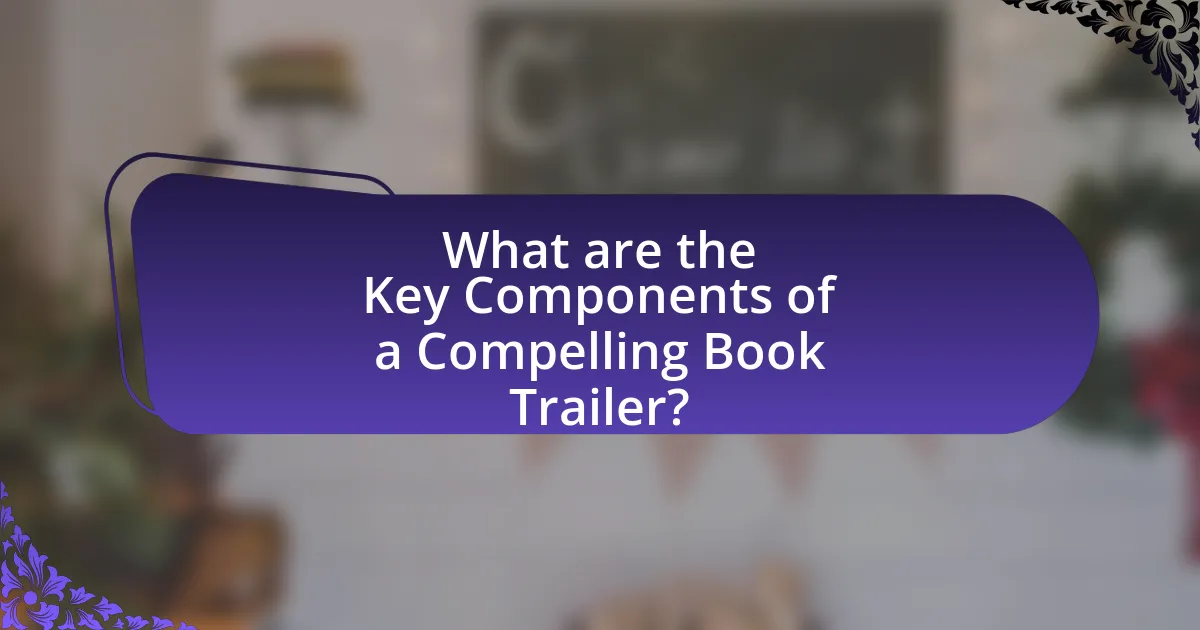
What are the Key Components of a Compelling Book Trailer?
A compelling book trailer includes several key components: a strong hook, engaging visuals, a concise summary, emotional appeal, and a clear call to action. The strong hook captures the audience’s attention immediately, often through a provocative question or statement. Engaging visuals, such as high-quality images or video clips, enhance the storytelling and create a visual connection to the book’s themes. A concise summary provides a brief overview of the plot or main ideas, ensuring that viewers understand the book’s essence without overwhelming them with details. Emotional appeal is crucial, as it connects the audience to the characters or themes, often achieved through music or voiceovers that evoke feelings. Finally, a clear call to action encourages viewers to purchase or learn more about the book, making it easy for them to take the next step. These components work together to create an effective promotional tool that can significantly increase interest and sales.
What storytelling techniques should be used in a Book Trailer?
Effective storytelling techniques for a book trailer include establishing a strong hook, creating emotional resonance, and utilizing visual storytelling. A strong hook captures the audience’s attention immediately, often through a compelling question or a dramatic moment from the book. Emotional resonance is achieved by highlighting relatable themes or character struggles, which can evoke empathy and connection from viewers. Visual storytelling enhances the narrative by using imagery, color schemes, and pacing that reflect the book’s tone and genre, making the trailer visually engaging. These techniques are validated by successful book trailers that have effectively drawn in audiences, demonstrating their impact on viewer interest and engagement.
How can a strong narrative hook be created?
A strong narrative hook can be created by starting with an intriguing question, a vivid image, or a compelling statement that immediately engages the audience’s curiosity. This technique captures attention by presenting a scenario or conflict that resonates emotionally or intellectually with viewers. For instance, beginning a book trailer with a thought-provoking question like “What would you do if you had only 24 hours to live?” instantly draws viewers in, prompting them to think and feel connected to the story. Research in storytelling emphasizes that hooks should evoke strong emotions or present relatable dilemmas, as these elements significantly enhance audience engagement and retention.
What role does pacing play in a Book Trailer?
Pacing in a book trailer is crucial as it dictates the rhythm and flow of the narrative, influencing viewer engagement. Effective pacing ensures that key elements of the story are revealed at the right moments, maintaining suspense and interest. For instance, a well-paced trailer balances quick cuts with slower, more dramatic moments to evoke emotions and highlight pivotal plot points. Research indicates that trailers with varied pacing can increase viewer retention and emotional response, making them more likely to seek out the book.
What visual and audio elements are essential for a Book Trailer?
Essential visual elements for a book trailer include engaging imagery, dynamic text overlays, and relevant color schemes that reflect the book’s themes. These visuals capture the audience’s attention and convey the story’s mood. Audio elements are equally important, with a compelling soundtrack, sound effects, and voiceovers that enhance the narrative and evoke emotions. Research indicates that trailers with strong visual and audio components can increase viewer engagement by up to 80%, making these elements crucial for effective storytelling in book promotion.
How can visuals be used to convey the book’s theme?
Visuals can effectively convey a book’s theme by using imagery, color schemes, and symbolism that reflect the core messages and emotions of the narrative. For instance, a dark color palette may represent themes of mystery or danger, while bright colors can evoke feelings of joy or adventure. Additionally, specific images or symbols associated with key plot points can create a visual shorthand that resonates with the audience, enhancing their understanding of the book’s underlying messages. Research indicates that visuals can significantly impact audience engagement, as studies show that people retain information better when it is presented alongside relevant images, thereby reinforcing the thematic elements of the story.
What types of music or sound effects enhance a Book Trailer?
Dramatic orchestral music and ambient sound effects significantly enhance a Book Trailer. Dramatic orchestral music creates an emotional connection, building tension and excitement, which is crucial for engaging viewers. Ambient sound effects, such as nature sounds or urban noise, provide context and immerse the audience in the book’s setting, making the trailer more relatable and vivid. Research indicates that trailers with well-chosen music and sound effects can increase viewer retention and emotional response, thereby improving the overall effectiveness of the promotional material.

How can Authors Create Effective Book Trailers?
Authors can create effective book trailers by focusing on a clear narrative, engaging visuals, and a strong emotional hook. A compelling narrative should summarize the book’s plot or themes in a concise manner, ideally within 1-2 minutes, to maintain viewer interest. Engaging visuals, including high-quality images or video clips that reflect the book’s tone, enhance the trailer’s appeal. Additionally, incorporating a strong emotional hook, such as a powerful quote or a dramatic moment from the book, can resonate with potential readers. Research indicates that trailers with a clear storyline and emotional engagement can increase viewer retention and interest, leading to higher book sales.
What steps should authors follow to produce a Book Trailer?
Authors should follow these steps to produce a Book Trailer: first, define the target audience and the book’s key themes to ensure the trailer resonates with viewers. Next, create a script that highlights the book’s main plot points and emotional hooks, keeping it concise and engaging. After scripting, gather visuals, such as images or video clips that represent the book’s content, and select appropriate background music that enhances the mood. Then, use video editing software to combine these elements, ensuring a professional finish with smooth transitions and clear audio. Finally, share the completed trailer on various platforms, including social media and book-related websites, to maximize reach and engagement. These steps are essential as they align with industry practices for effective book marketing, which emphasize the importance of audience connection and visual storytelling.
How can authors script their Book Trailer effectively?
Authors can script their Book Trailer effectively by focusing on a clear narrative structure that highlights the book’s main themes, characters, and conflicts within a concise timeframe. A well-structured script typically includes an engaging hook in the opening, a brief introduction of the protagonist, a presentation of the central conflict, and a compelling call to action at the end. Research indicates that trailers under two minutes tend to retain viewer attention better, making brevity essential. Additionally, incorporating visual elements and sound that align with the book’s tone can enhance emotional engagement, as studies show that audiovisual content significantly increases retention rates among audiences.
What tools and software are recommended for creating Book Trailers?
Recommended tools and software for creating book trailers include Adobe Premiere Pro, Final Cut Pro, and iMovie for video editing, along with Canva and Animoto for graphic design and animation. Adobe Premiere Pro and Final Cut Pro are industry-standard video editing software that provide advanced features for professional-quality trailers. iMovie is user-friendly and suitable for beginners. Canva and Animoto offer templates and easy-to-use interfaces for creating visually appealing graphics and animations, making them ideal for authors without extensive design experience. These tools collectively enable authors to produce engaging and visually captivating book trailers that can effectively attract their target audience.
What common mistakes should authors avoid when making a Book Trailer?
Authors should avoid several common mistakes when making a book trailer, including excessive length, lack of a clear message, poor production quality, and neglecting the target audience. Excessive length can lead to viewer disengagement; studies show that videos under two minutes retain viewer attention better. A lack of a clear message can confuse potential readers, as trailers should succinctly convey the book’s theme and hook. Poor production quality, such as bad audio or visuals, can diminish credibility and interest; research indicates that high-quality visuals significantly enhance viewer perception. Finally, neglecting the target audience can result in a trailer that fails to resonate, as understanding audience preferences is crucial for effective marketing.
How can poor quality affect the perception of a Book Trailer?
Poor quality can significantly diminish the perception of a book trailer by creating a negative impression of the book itself. When a trailer features low production values, such as poor audio, subpar visuals, or unprofessional editing, it can lead potential readers to question the quality of the book. Research indicates that visual and auditory elements heavily influence consumer judgments; for instance, a study published in the Journal of Marketing found that high-quality visuals can enhance perceived value and credibility. Therefore, if a book trailer appears unrefined, it may suggest that the book lacks professionalism and attention to detail, ultimately deterring potential readers from engaging with the content.
What are the pitfalls of overloading a Book Trailer with information?
Overloading a Book Trailer with information can lead to viewer confusion and disengagement. When a trailer presents too much content, it overwhelms the audience, making it difficult for them to grasp the core message or theme of the book. Research indicates that effective communication relies on clarity and conciseness; for instance, studies show that audiences retain information better when it is presented in a straightforward manner. Additionally, excessive details can dilute the emotional impact of the trailer, as viewers may struggle to connect with the narrative or characters amidst the clutter. Therefore, maintaining a balance between intrigue and information is crucial for creating an engaging Book Trailer.
What are some best practices for promoting a Book Trailer?
To effectively promote a book trailer, authors should utilize social media platforms, engage with their audience, and collaborate with influencers. Social media platforms like Facebook, Instagram, and Twitter allow for targeted advertising and organic reach, enabling authors to share their trailers widely. Engaging with the audience through comments and shares increases visibility and encourages word-of-mouth promotion. Collaborating with influencers or book bloggers can amplify reach, as they often have established audiences interested in book content. According to a study by the Pew Research Center, 72% of adults use social media, highlighting its importance in reaching potential readers.
How can social media be leveraged to share a Book Trailer?
Social media can be leveraged to share a book trailer by utilizing platforms like Facebook, Instagram, Twitter, and TikTok to reach a broad audience. These platforms allow for targeted advertising, enabling authors to promote their trailers to specific demographics interested in their genre. For instance, Instagram Stories and Reels can showcase short clips of the trailer, while Facebook groups dedicated to book lovers can facilitate organic sharing and discussions. According to a 2021 survey by the Pew Research Center, 69% of adults in the U.S. use Facebook, making it a prime platform for engagement. Additionally, using hashtags relevant to the book’s themes can increase visibility and engagement, as posts with at least one hashtag receive 12.6% more engagement than those without.
What role do book launch events play in promoting a Book Trailer?
Book launch events serve as a critical platform for promoting a book trailer by generating excitement and engagement among potential readers. These events provide an opportunity for authors to showcase their book trailers in a dynamic setting, often accompanied by live readings, discussions, and Q&A sessions that enhance audience interest. Research indicates that visual content, such as book trailers, can increase viewer retention and engagement by up to 80%, making their presentation during a launch event particularly effective. Additionally, the social media buzz generated from attendees sharing their experiences and reactions to the trailer can significantly amplify its reach, leading to increased visibility and potential sales.
What tips can help authors create a captivating Book Trailer?
To create a captivating book trailer, authors should focus on a clear and engaging storyline that reflects the essence of the book. This involves selecting key scenes or themes that evoke emotion and intrigue, ensuring that the trailer is visually appealing with high-quality graphics and sound. Additionally, incorporating a strong call to action encourages viewers to seek out the book. Research indicates that trailers under two minutes tend to retain viewer attention better, making brevity essential. Furthermore, utilizing social media platforms for distribution can significantly increase visibility, as studies show that video content is shared 1,200% more than text and images combined.
